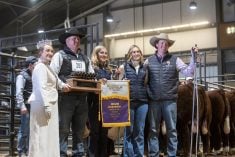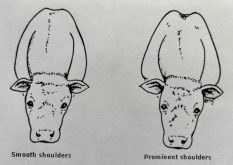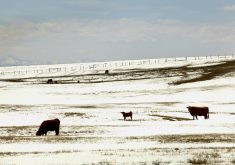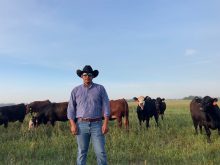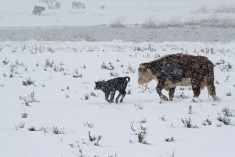Before breeding season starts, herd sire considerations should be front and center.
Assess the condition of the bull battery well before the bulls are released into the cow and heifer herds. A good place to start is a breeding soundness exam which is a uniform method of determining a bull’s likelihood of establishing pregnancy in an appropriate number of healthy, open, cycling cows and heifers within an acceptable period of time. It is a challenge to work and restrain adult and growing bulls in a confined space. A safer, more efficient strategy is to combine many procedures at once, such as semen testing, necessary hoof care, vaccinations and trichomoniasis testing if desired.
Read Also

Body condition, nutrition and vaccination for brood cows
One of the remarkable events of the past century related to ranching has been the genetic evolution of brood cows….
“Bulls are truly athletes,” says Karl Hoppe in a North Dakota State University news release. Hoppe is an extension livestock systems specialist at North Dakota State University’s Carrington Research Extension Center.
“To do the breeding work they do requires them to be sound, with healthy feet and legs, and in good condition, which means not too fat or too thin.”
Consider what the average bull is faced with over the course of the breeding season. He could be asked to walk miles every day searching out the females entering heat, and then following them for more distance as he attempts to charm them. Eventually he’ll propel his 2,000- to 2,500-pound frame onto them. He does all this while being on the lookout for the next female reaching estrus to repeat the cycle.
It is also important to consider the social order and handling of a group of bulls. Bulls will establish a pecking order when brought together, so it is prudent to have this finalized before the season begins. Bulls that will be combined in multi-sire breeding pastures should be penned together for several weeks before the season begins to give them time to work out a pecking order. Dropping a new bull at the pasture on the first day of the breeding season isn’t recommended.
Extensive research has determined that dominant bulls will breed more females than younger, weaker or more submissive bulls, so it is good practice to combine similarly aged bulls in a pasture rather than mixing older with younger. If mixed, younger bulls will spend more time fighting for dominance and challenging weaker, older bulls. This increases the risk of injury and takes their attention away from breeding.
“Bulls can get hurt for multiple reasons,” says Gerald Stokka, North Dakota State University extension veterinarian and livestock stewardship specialist, in a release. “Bulls will fight to determine a social dominance. The more bulls in a pasture, the more fighting that occurs. Even though the bulls have been feeding together, breeding season brings out the aggressive attitude.”
There may be times when two bulls will fight excessively during the breeding season and producers will need to separate them into different pastures or paddocks. Some producers use fewer bulls with the females during the first two weeks to reduce fighting. They then remove and replace them with fresh bulls. The theory is the smaller number of bulls will tire due to constant breeding during the first two weeks and will not have energy or desire to fight for dominance.
In the early part of the breeding season, closely observe the bulls to quickly identify problems that may arise. Injured or otherwise unfit animals should be removed and replaced or cows will not be bred in a timely fashion.
“It is better to catch the problem early than be totally surprised at pregnancy testing time,” says Hoppe.
Bull care and handling does not end during the breeding season. Once producers withdraw the bulls from the females, the bulls test the social structure again. Bulls should again be sorted by age and given plenty of space. If possible, finalize their placement on the same day, as adding lone bulls over time will encourage segregation, riding and fighting.
Many producers with larger numbers of herd sires will shut off available water for 24 hours as bulls can get overheated and exhausted from fighting. If weather conditions are hot and humid, the bulls may over-drink and water founder. It is inevitable that they reset their pecking order thus the goal is to manipulate conditions and help the bulls endure this period of time with as few disruptions and injuries as possible.
The goal is to use fit and healthy bulls to impregnate females as early as possible in the breeding season. It’s also important to have these bulls healthy throughout the off season, ensuring their readiness for the next year.



